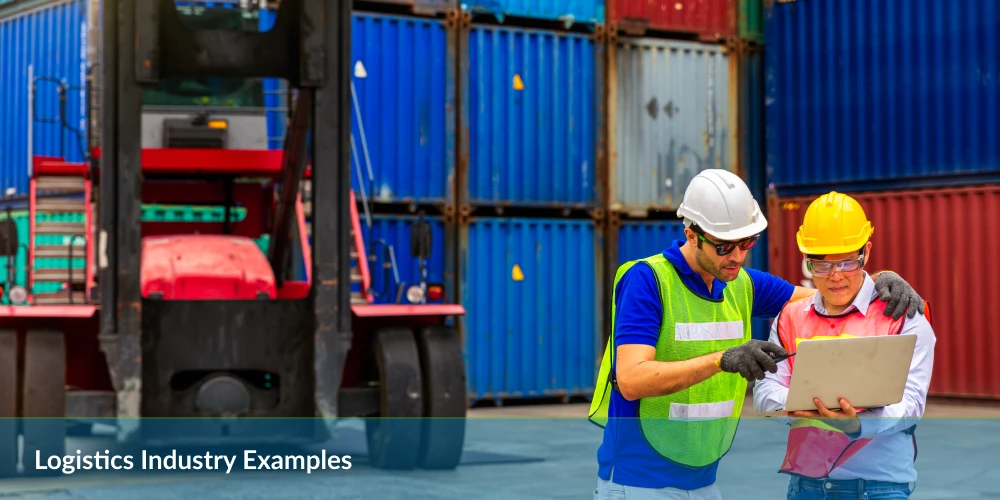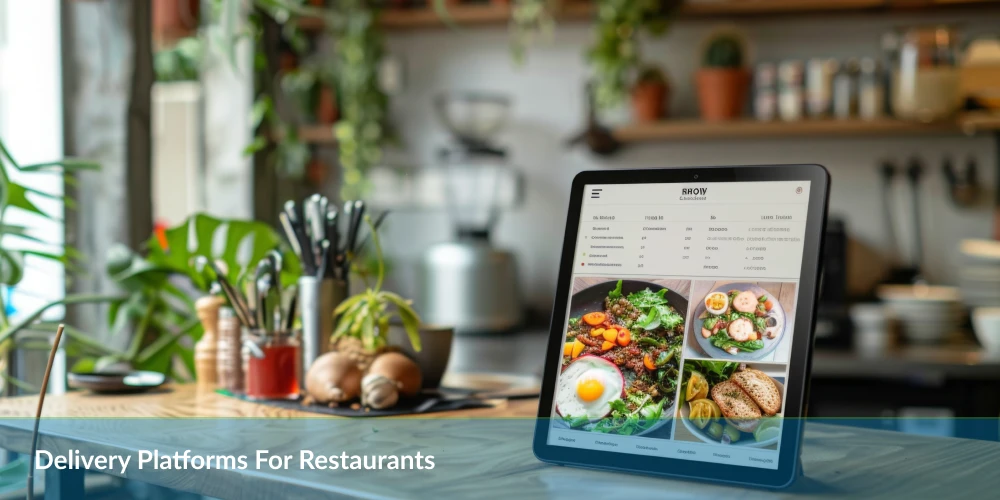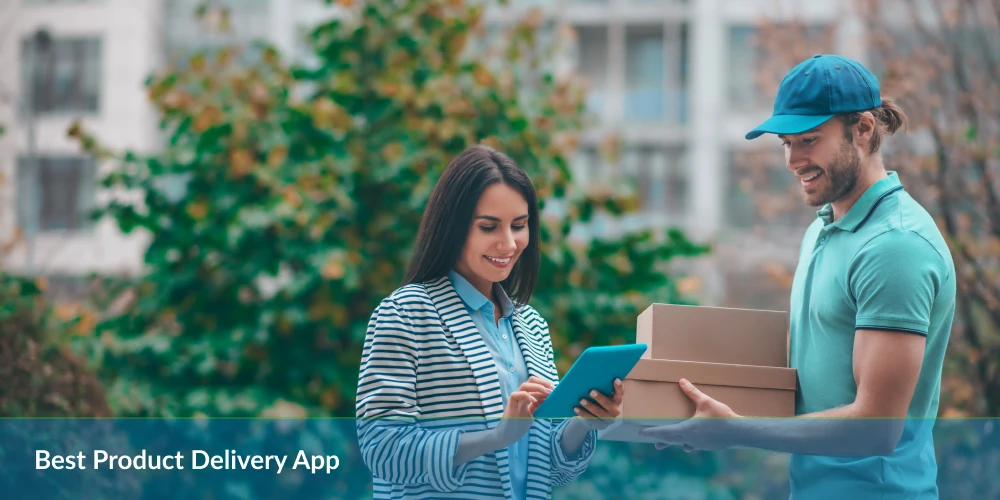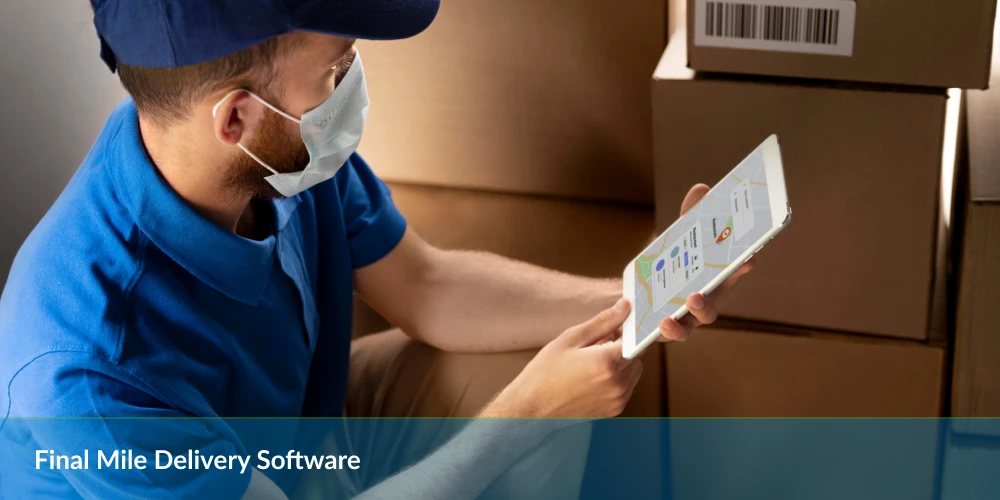Table of Contents
The global AI in logistics market size was valued at USD 11.61 billion in 2023. It is projected to reach from USD 16.95 billion in 2024 to USD 348.62 billion by 2032, growing at a CAGR of 45.93% during the forecast period (2024–2032).
Source: Straits Research
Gone are the days when logistics simply meant transporting goods from one point to another. In 2025, logistics is a powerhouse of innovation, fueled by cutting-edge technology, heightened customer expectations, and a pressing need for sustainability. The field has transformed into a dynamic, tech-integrated domain that touches every aspect of business, from procurement and warehousing to last-mile delivery and customer satisfaction.
Whether an agile online brand streamlines orders through cloud-based logistics platforms or a global enterprise fine-tunes its supply chain with real-time data, adaptability is the new gold standard. As the world continues to change rapidly, with disruptions, opportunities, and shifts in consumer behavior, the logistics industry is evolving at an unprecedented rate.
In this article, we explore not only the most impactful trends and technologies shaping logistics in 2025 but also nuanced, real-world scenarios that illustrate how these trends are unfolding in practice. You won’t find hype here, just actionable insights and informed foresight to help your business navigate the future of logistics with clarity and confidence.
Artificial Intelligence (AI) Driving Intelligent Decision-Making
Artificial Intelligence (AI) has transitioned from being a mere buzzword to becoming the nerve center of modern, intelligent logistics systems. Logistics companies increasingly adopt AI to streamline operations, reduce costs, and meet rising customer expectations. From machine learning algorithms to real-time data analytics, AI drives smarter decision-making across the supply chain.
Smarter Operations Powered by AI
- Route Optimization: AI-driven route planning systems analyze live traffic data, weather conditions, fuel efficiency metrics, and delivery priorities to determine the most efficient delivery routes. This reduces transit times, cuts fuel consumption, and lowers operational costs.
- Demand Forecasting: By analyzing historical sales data, seasonal trends, and external factors such as economic indicators, AI enables the prediction of future demand with high accuracy. This enables businesses to manage inventory levels more effectively, prevent stockouts, and minimize excess inventory.
- Warehouse Automation: AI-powered robots and smart picking systems enhance speed and accuracy in warehouses. These systems can dynamically assign tasks to human workers and robots, optimizing workflow and reducing idle time.
- Predictive Maintenance: Sensors and AI algorithms continuously monitor the health of vehicles and equipment, enabling proactive maintenance. Companies can schedule timely maintenance and prevent costly downtimes by predicting potential breakdowns before they occur.
Industry Insight
Leading global logistics operators now use AI-based tools that can anticipate shipment delays before they occur. These systems automatically reroute vehicles in real time based on live traffic data, weather disruptions, or unexpected route closures. Others leverage AI for dynamic labor and equipment allocation inside distribution centers, balancing human effort and robotic precision.
Do You Know?
- Amazon uses AI to optimize routes, predict delivery times, and manage inventory and warehouses.
- UPS uses its AI-driven ORION system to sort packages and find the fastest delivery routes.
- DHL applies AI for demand forecasting and spotting supply chain disruptions.
Why It Matters
AI empowers logistics teams to shift from reactive problem-solving to proactive decision-making. The result? Improved delivery accuracy, faster fulfillment cycles, optimized resource use, and happier customers. AI offers a critical edge in a competitive landscape where efficiency and responsiveness are key.
Pro Tip: There is no need to dive into full automation right away. Start with AI tools like smart route planning or demand forecasting to see quick, impactful results and scale up over time.
Blockchain Creating End-to-End Transparency
Blockchain technology is rapidly emerging as a game-changer in the logistics industry, effectively addressing long-standing challenges related to visibility, traceability, and trust. With its decentralized and immutable ledger system, blockchain enables secure and transparent data sharing across various stakeholders, including manufacturers, suppliers, freight carriers, customs authorities, and end customers.
Addressing Industry Pain Points
Traditional logistics often involves fragmented communication, isolated data systems, and time-consuming manual paperwork. These inefficiencies can result in delayed shipments, miscommunication, and compliance risks. Blockchain technology helps overcome these issues by maintaining a single, consistent, and tamper-proof record of transactions. Every event in the supply chain is recorded in real time and made accessible to all authorized participants, ensuring full transparency and accountability at every stage of the product journey.
Several global trade platforms have been built using blockchain to enable seamless collaboration between carriers, port authorities, customs agents, and shippers. These platforms allow all parties to access a shared and unchangeable version of the transaction record. As a result, they significantly reduce the need for paper documentation, speed up cargo processing, and enhance operational efficiency. An example is TradeLens, a platform co-developed by IBM and Maersk, which has successfully demonstrated how blockchain can streamline global trade by improving supply chain visibility and data integration.
In industries such as healthcare, food and beverage, and luxury goods, knowing the exact origin of a product and verifying its movement through the supply chain is essential. Blockchain provides end-to-end traceability, helping companies meet strict regulatory requirements and giving consumers confidence in the authenticity and safety of the products they purchase. This increased transparency enhances brand credibility and builds lasting customer loyalty.
As global supply chains grow in complexity, blockchain technology offers a powerful solution to some of the logistics sector’s most pressing challenges. By improving visibility, ensuring accurate traceability, and fostering trust among all parties involved, blockchain is reshaping the future of logistics and setting new standards for efficiency and integrity in global trade.
Sustainability and Green Logistics at the Core of Strategy
Environmental consciousness is no longer just a value-add in logistics; it has become a strategic cornerstone for long-term success. In 2025, the emphasis on sustainability has evolved from mere regulatory compliance to a catalyst for innovation, operational efficiency, and brand differentiation.
The global green logistics market was valued at USD 1.54 trillion in 2024 and is projected to reach USD 3.39 trillion by 2034, growing at a CAGR of 8.32%.
Source: Precedence Research
Forward-thinking logistics providers are leading the way by embedding eco-friendly initiatives throughout their supply chains. From electrifying delivery fleets and investing in carbon offset programs to constructing LEED-certified, solar-powered warehouses, green logistics is no longer a fringe strategy. Many companies are also leveraging AI-driven route optimization software to minimize fuel consumption and reduce emissions, making existing operations significantly more sustainable without requiring a full systems overhaul.
Additionally, there is a growing adoption of circular supply chain models that reuse materials and components to extend product life cycles while reducing environmental impact. Some companies are even experimenting with micro-fulfillment centers in urban areas to reduce last-mile emissions and improve delivery speed.
Today’s eco-conscious consumers are not only expecting sustainability, but they’re also demanding it. Brands that actively communicate and demonstrate their environmental efforts are gaining a competitive edge in terms of customer trust and loyalty. At the same time, global and local environmental regulations are becoming stricter, compelling organizations to take proactive measures or face potential penalties and reputational damage.
Being a leader in sustainable logistics doesn’t just future-proof your business against regulatory changes but also opens the door to new market opportunities, investor interest, and positive brand positioning.
Hyper-Automation in Warehousing and Fulfillment
The modern warehouse is no longer just racks, forklifts, and static storage; it’s a high-tech, digitally orchestrated environment where machines and humans collaborate to drive unmatched levels of speed, efficiency, and accuracy. The age of smart warehousing is here, and it’s transforming fulfillment as we know it.
Leading fulfillment centers are increasingly turning to robotics and artificial intelligence to manage inventory and streamline order processing. Autonomous mobile robots (AMRs) now transport shelves and bins directly to human pickers, dramatically reducing travel time and fatigue. AI-powered vision systems enable machines to detect, identify, and sort items with remarkable precision. Meanwhile, wearable technology, such as smart glasses, voice-directed picking, and wrist-mounted devices, boosts human productivity by providing real-time guidance and reducing errors.
Other emerging technologies, such as digital twins, IoT sensors, and cloud-based warehouse management systems (WMS), are enabling predictive maintenance, real-time inventory tracking, and seamless coordination across operations.
With e-commerce expectations skyrocketing and consumer demand for fast and accurate deliveries intensifying, hyper-automation is becoming increasingly essential. Warehouses need to fulfill more orders in less time, without compromising quality or incurring excessive labor costs. At the same time, ongoing labor shortages and rising wages make automation not just an efficiency tool but a necessity for maintaining profitability.
Hyper-automation doesn’t just improve throughput; it also enhances workplace safety, minimizes human error, and provides data-driven insights that support continuous improvement.
Predictive Analytics and Real-Time Visibility
Customers today expect more than just on-time delivery; they demand transparency and control. Predictive logistics is redefining the delivery experience by not only tracking shipments in real-time but also anticipating potential disruptions before they happen. This shift from reactive to proactive logistics is transforming how companies manage supply chains and engage with their customers.
The integration of IoT sensors, GPS technology, and advanced analytics has empowered logistics providers to offer unprecedented visibility into the movement and condition of goods. Beyond just location, these systems monitor temperature, humidity, vibration, and even light exposure, critical for sensitive shipments such as pharmaceuticals, perishable foods, and high-end electronics.
Predictive analytics models also leverage historical data, weather forecasts, traffic patterns, and carrier performance to estimate delivery times more accurately and alert stakeholders about potential delays. This capability allows logistics teams to proactively reroute shipments, update customers in real time, and minimize service disruptions.
In a landscape where customer experience can make or break a brand, real-time data is a powerful trust builder. Customers feel more confident when they can track their orders every step of the way, and businesses benefit from fewer inbound support calls and complaints.
Operationally, predictive logistics enhances planning and decision-making. Logistics managers can allocate resources more efficiently, reduce spoilage or damage, and cut down on costly errors and downtime. Ultimately, this leads to improved service levels, increased customer retention, and a more resilient supply chain.
- Implement GPS tracking and IoT-enabled sensors to provide full shipment visibility, not just for location but also for environmental conditions.
- Use cloud-based dashboards and mobile apps to share real-time data with customers, suppliers, and internal teams, ensuring everyone stays informed.
- Leverage predictive analytics tools to anticipate delays and send automated alerts, enabling faster response times and better customer communication.
Integrate with your CRM or order management system to deliver a seamless end-to-end visibility experience that empowers both your customers and your support team.
Predictive logistics isn’t just about moving goods but about moving them intelligently, with foresight and transparency. Businesses that embrace this approach are better equipped to navigate disruption, meet rising expectations, and build stronger customer relationships.
Logistics-as-a-Service for Scalable Fulfillment and Seamless Growth
Logistics-as-a-Service (LaaS) is changing the game by offering flexible, on-demand solutions for warehousing, order fulfillment, and transportation. Instead of investing in costly infrastructure, businesses can tap into a cloud-based logistics network that scales with their needs.
Do you know?
The Global Logistics-as-a-Service market showcased growth at a CAGR of 6.50% during 2020-2023. The market was valued at USD 1.2 trillion in 2023, which is expected to reach USD 2.0 Trillion in 2030.
Source: Research And Markets
Whether it’s managing a seasonal rush, expanding into new markets, or dealing with sudden spikes in demand, LaaS allows companies to stay agile without the burden of owning warehouses, delivery fleets, or complex logistics systems. It turns logistics into a pay-as-you-go service, giving businesses the freedom to focus on growth rather than day-to-day operations.
This model is especially beneficial for small to mid-sized businesses looking to access enterprise-level logistics capabilities such as real-time tracking, automated order processing, and multi-location inventory management, all without the heavy upfront investment typically required.
By integrating your eCommerce platform or ERP system with a LaaS provider, you can streamline operations, improve visibility across your supply chain, reduce fulfillment errors, and speed up delivery times. It also supports better decision-making through data insights and helps create a more reliable and satisfying experience for your customers.
Human-Machine Collaboration Enhancing Workforce Productivity
Technology in logistics is here to empower workers, not replace them. Innovations like exoskeletons and augmented reality (AR) are giving employees the tools they need to be more efficient, reduce injuries, and perform at their best.
For instance, exoskeletons are wearable devices designed to support workers during heavy lifting, reducing the physical strain on their bodies. These exoskeletons allow employees to lift heavier loads safely, lowering the risk of musculoskeletal injuries. By offering this support, workers can be more productive without compromising their health.
Meanwhile, AR glasses are helping employees work faster and more accurately. These glasses guide workers through the order-picking process by displaying real-time instructions, such as which items to grab and the quickest path to get them. This not only speeds up the job but also reduces errors, making operations smoother and more efficient.
Workplace safety is a big concern, and technology plays a crucial role in improving it. Ergonomic tools and wearable devices are helping workers avoid injury by promoting proper lifting techniques and alerting them when they’re pushing their limits. These tools make sure workers can stay productive without risking their well-being.
But technology alone isn’t enough; training is key. It’s important that workers are equipped with the knowledge they need to make the most of these tools. When they understand how to use exoskeletons and AR glasses effectively, they can fully benefit from the efficiencies these technologies bring.
By combining cutting-edge tools with proper training, logistics companies can create a safer, more efficient environment where workers feel empowered, not replaced. Investing in both technology and training ensures employees can confidently adapt and thrive in a modern workplace.
Pro Tip: To maximize productivity and safety, pair advanced technologies like exoskeletons and AR with comprehensive training, empowering workers to use these tools effectively.
Key Takeaways:
- AI is Revolutionizing Logistics: Artificial Intelligence (AI) is at the heart of logistics innovations in 2025, optimizing routes, improving demand forecasting, and enhancing warehouse automation, all of which streamline operations and reduce costs.
- Blockchain Ensures Transparency: Blockchain technology is revolutionizing the logistics industry by providing full transparency and traceability, enabling secure and tamper-proof data sharing among stakeholders, thereby enhancing trust and reducing inefficiencies.
- Sustainability is Key: Green logistics, including eco-friendly fleets and carbon offset programs, is becoming integral to logistics strategies. Businesses that prioritize sustainability are not only adhering to regulations but are also gaining a competitive edge with eco-conscious consumers.
- Hyper-Automation Drives Efficiency: The integration of robotics, AI, and wearable tech in warehouses is driving hyper-automation, allowing businesses to enhance productivity, minimize errors, and reduce operational costs while addressing labor shortages.
- Logistics-as-a-Service (LaaS) Offers Flexibility: LaaS is transforming logistics by providing scalable, on-demand solutions that enable businesses to manage logistics without owning physical infrastructure, making it easier to expand and scale operations.
Wrapping It Up!
The logistics industry in 2025 is undergoing a remarkable transformation, becoming smarter, more sustainable, and increasingly adaptable to market demands. AI, real-time intelligence, transparency, and green strategies are at the heart of this evolution. Businesses that embrace these innovations are not only improving efficiency; they are also positioning themselves to thrive in an ever-changing landscape, building resilience and long-term success.
The logistics industry in 2025 is evolving rapidly, becoming smarter, more sustainable, and increasingly adaptable to the demands of a fast-paced world. Powered by AI, real-time intelligence, transparency, and green initiatives, businesses embracing these changes are not merely optimizing; they are setting themselves up for long-term success in an ever-changing environment.
For any company, whether a startup or an established leader, staying informed and investing in logistics innovation is crucial to remaining competitive. Embracing these technological and strategic shifts is no longer a choice, but it is essential for future-proofing your operations and ensuring sustainability in the years ahead.
The businesses that will lead the logistics revolution are those that make these changes part of their core operations. From AI-driven decision-making to real-time data and eco-friendly strategies, these innovations will shape the future of logistics.
How will your business rise to the challenge and lead the logistics revolution?
To stay ahead in this rapidly evolving industry, discover how NetworkON can help streamline your logistics operations and ensure your business is well-prepared for the future. Contact us today and take the first step toward optimizing your logistics strategy.
Frequently Asked Questions
Q1: How is AI transforming logistics operations in 2025?
AI is enabling smarter decision-making in logistics by optimizing delivery routes, improving demand forecasting, automating warehouses, and predicting maintenance needs for vehicles and equipment.
Q2: What role does blockchain play in logistics?
Blockchain enhances logistics by providing transparency, traceability, and secure data sharing across the supply chain, allowing real-time updates and reducing delays and errors.
Q3: Why is sustainability important in logistics in 2025?
Sustainability is critical as eco-conscious consumers demand greener practices, and stricter regulations are pushing businesses to reduce their carbon footprint. Sustainable logistics also offers operational efficiency and competitive advantages.
Q4: What is Logistics-as-a-Service (LaaS) and how does it benefit businesses?
LaaS provides businesses with flexible, cloud-based logistics solutions that eliminate the need for significant upfront investments in infrastructure. This model enables scalable fulfillment, improved inventory management, and efficient tracking, all on demand.





0 Conversations